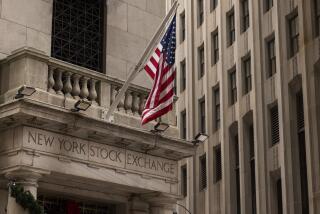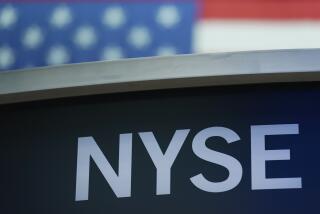Major Money System Reform Held Unlikely
- Share via
President Reagan’s call this week for a study of a possible international monetary conference has strengthened a movement demanding a curb on volatile exchange rates, monetary experts said Thursday.
Although the volatility has disrupted world trade and swelled the U.S. trade deficit, chances of a major overhaul, such as a return to fixed exchange rates, are seen as extremely slim. Many nations, including the United States, Japan and West Germany, oppose such drastic steps but often cannot agree on other less-severe reforms.
Also, the decline in the dollar during the last year--pushed along by intervention by the United States and four other industrial nations in foreign currency markets last September--has reduced pressures for drastic monetary reform, experts agreed.
Instead, they said, what is likely to result from Reagan’s order is a continuation of coordinated efforts by the big industrial powers to stabilize exchange rates. If any reforms are adopted, they added, they are likely to be along the lines of “target zones,” with boundaries limiting the amount that currencies could fluctuate.
“We are closer now than ever before to possible reforms,” said Howard Rosen, a research associate at the Washington-based Institute for International Economics. Rosen, who advocates adoption of target zones, added, “But we still have a long way to go.”
Reagan Move Praised
Reagan’s call in his State of the Union address Tuesday for Treasury Secretary James A. Baker III to study the possibility of holding an international monetary conference drew praise immediately from world leaders such as Japanese Prime Minister Yasuhiro Nakasone and such reform advocates as Rep. Jack Kemp (R-N.Y.).
Unstable exchange rates in recent years have led to fluctuations in the prices of internationally traded goods, making it harder for firms and nations to trade and make business plans. Unstable rates result also in unwelcome changes in interest rates and inflation.
Japanese economic officials, for example, are worried that recent rises in the value of the yen--which has gained about 25% against the dollar during the last year--are forcing up prices of Japanese exports and could throw their nation into an economic slowdown. (In that same period, the dollar has lost about 30% against the French franc, Swiss franc and West German mark, and about 25% against the British pound.)
Canadian officials, on the other hand, are worried that the slumping Canadian dollar--which has lost about 6% of its value since September--could drive up already-climbing interest rates in Canada and ignite higher inflation in goods imported from the United States and Japan.
“We must never again permit wild currency swings to cripple our farmers and other exporters,” Reagan said Tuesday, referring to how the rapid rise in the value of the dollar, which peaked in February, 1985, had made U.S. exports, particularly farm products, more expensive, bloating the U.S. trade deficit.
Dollar Rose 60%
Before peaking, the dollar had risen between 40% and 60%. Many U.S. exporters contend that the dollar must still fall further before their prices can drop enough to stimulate export sales and significantly cut the U.S. trade deficit.
Reagan’s call for a study is seen as particularly significant because it represents a 180-degree turnaround in Administration policy. Until last year, the President was against any type of intervention to control the dollar.
His remarks were also called significant by the monetary experts because any reform of exchange rates would need U.S. support, given the dollar’s dominant role as a benchmark for prices of many commodities and as a reserve currency in many nations’ central banks.
Reagan’s move, some experts say, is also aimed at stalling protectionist sentiment in Congress and at mollify such congressional leaders as Kemp and Sen. Bill Bradley (D-N.J.), who have said Reagan has not been doing enough to stabilize the dollar. A Kemp-Bradley-sponsored monetary conference of policymakers and economists in Washington in November added significantly to the momentum for possible change.
Bretton Woods Meeting
But many economists, traders and others said this week that it is highly unlikely that the United States or other industrial powers would want a conference of the magnitude and with the results of the last major international monetary conference, held in Bretton Woods, N.H., in 1944.
At that conference, international officials agreed to an exchange system that kept their currencies within a certain range of the dollar, with the dollar in turn pegged to gold. That modified dollar-gold standard lasted nearly three decades, until President Richard M. Nixon dismantled it in the early 1970s.
The major nations would never agree to return to such rigid standards, most policymakers say, largely because it would force nations to adjust their domestic monetary and fiscal policies just to maintain their currencies at a certain level. Such adjustments could conflict with other economic goals, such as fighting inflation or stimulating employment.
More to Read
Sign up for Essential California
The most important California stories and recommendations in your inbox every morning.
You may occasionally receive promotional content from the Los Angeles Times.










